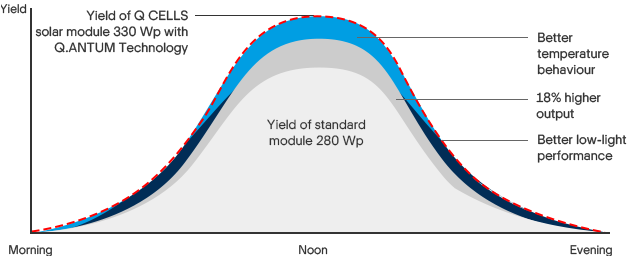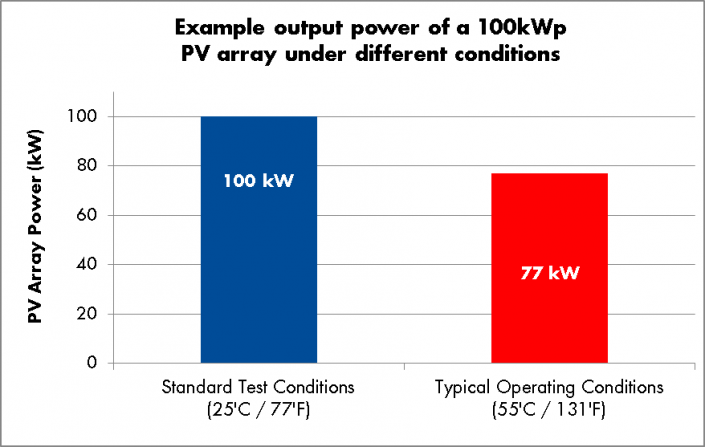News Single
-
Play Pokies with Welcome Bonus (No Download)
How to Win Money with Top Australian Pokies 2024
AU Gambling Sites New
Online Gambling Legislation Australia
How Does a Pokie Machine Work?
Heat Dissipation from Pokie Machine
Australia Casino Deposit Free (No Spin)
Play Deposit Casino Pokies & Win
Where to Try Pokies?
Profitable Pokies with Bonus Promotions
Why Should You Consider Inverter Oversizing
Are you surprised/puzzled / scratching your head why a 6.6kW solar system has a 5kW inverter?
Or
Why does a 13kW solar system have a 10 kW inverter?
Please read on for your answers.
If you have been researching solar systems then you might have come across the term oversizing solar inverters.
The concept involves installing more panels than the capacity of the solar inverter.
Due to factors like old infrastructure, voltage restrictions, regulations, supply coming to your house (1 phase or 3 phase) and service provider (Ausgrid, Endeavour energy & Essential energy in NSW) rules & restrictions, end users have a limit to the maximum size of solar systems that can be installed on their property. Hence there is a limit on the size of the inverter which you can connect to the grid.
At the beginning of the solar revolution in Australia, people installed the same solar panel capacity compared to the solar inverter.
But if you want to take the most benefit of your solar system, you should consider this option of oversizing inverters. The reason for that is that solar panels rarely produce at 100% of their rated capacity.
Now you may ask why?
The solar panels efficiency are tested under standard test conditions (STC referred to in the spec sheets of the panels) which generally are perfect testing conditions (1. Irradiance 1000W/msq; 2. Air density 1.5; 3. Temperature of 15 deg C) so that can maximise the output.
But in an actual environment that rarely happens.
If you add extra solar panels, you will get a better advantage because of better inverter efficiency. Oversizing your solar panel can help you save some money. But the real advantage is increased energy production because energy providers have restrictions on inverter size.
You can overclock your inverter by 133% and still be eligible to receive financial assistance in the form of STCs (Small-scale energy certificates). But if you cross that limit, it’s possible that your application of STCs can be refused.
Size of rebate depends on no. of solar panels installed. And that depends upon the size of the inverter.
A/c to CEC guidelines, the total panel capacity can’t exceed the total inverter capacity by one-third(133%).
If that happens, you may not be eligible for receiving the rebate(And that is not something you would want)
Is it safe to oversize solar inverters?
Yes. It’s completely safe.
The inverters which you buy in Australia can easily handle the total capacity one-third larger than its own without an issue. In fact some inverters can actually withstand up to 50% more than their rated capacity.
Example from different manufacturers regarding this topic:
1. Fronius Primo 3.0-1 up to Fronius Primo 8.2-1, can be oversized 50% above the rated nameplate capacity without voiding the manufacturer’s warranty, provided that you met these below requirements
a. String configuration adheres to the voltage and current window guidelines published in the operation manual
b. The open circuit voltage of the PV generator does not exceed the maximum input voltage of the inverter under any circumstances (temperature, irradiance)
c. The maximum DC array short circuit current must not exceed 1,5 times the maximum DC input current of the inverter.
At any point, the voltage and current entering the inverter should never exceed its specified limit.
(Attach the pdf file on website for reference and authenticity of above statement)
2. Enphase: A common question asked of Enphase installers is, “Why are you installing a 260 watt solar module on a 215 watt microinverter?”
Please check the graph below to get a better understanding of it.
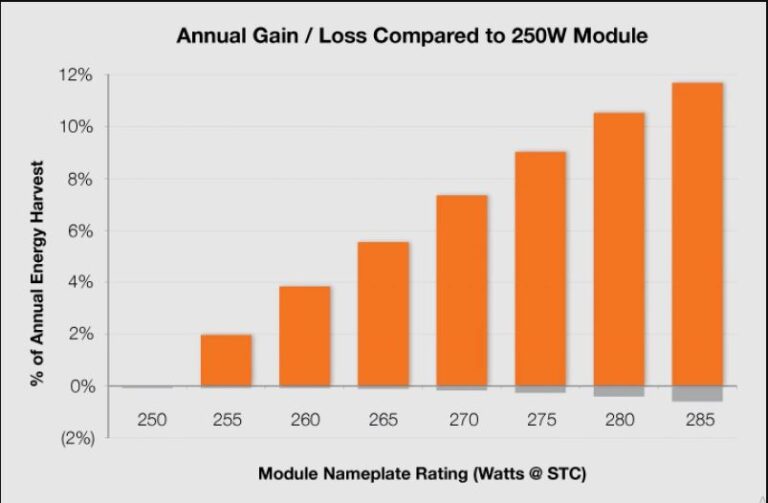
3. SMA Inverter:- The Sunny Central inverters from SMA are designed for maximum oversizing capabilities. PV power plant projects with SMA central inverters profit from more flexibility, reliability, technology safety and highest profitability.
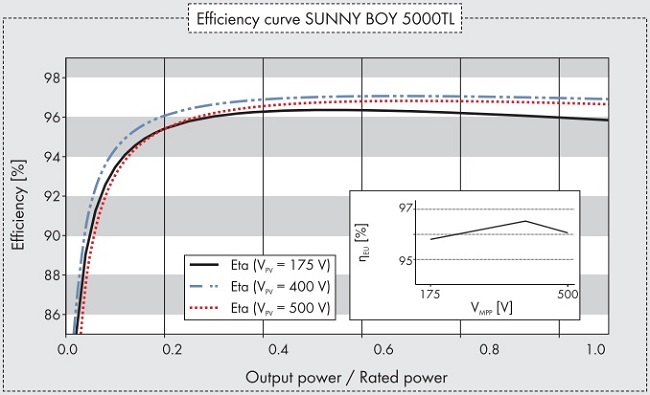
Maximize the daytime energy production
If you are a business or somebody whose consumption is higher during peak hours, oversizing your inverter can help achieve the required energy goal early in the day and maintain that till afternoon.(See the below graph)
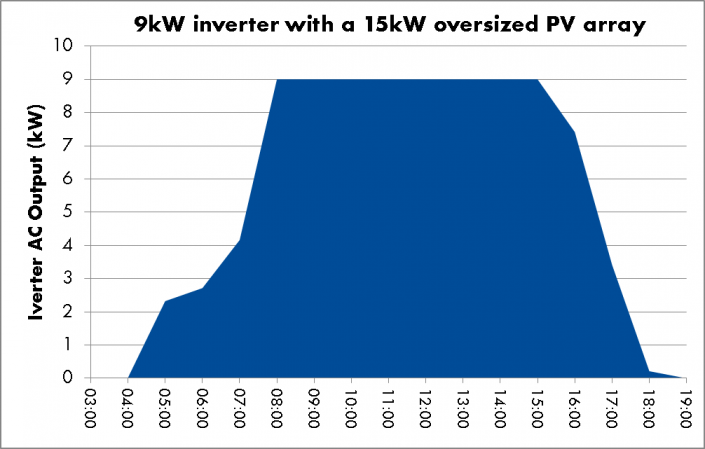
Overclocking your inverter can improve average inverter efficiency.
The modern inverters operate at a high efficiency level.
When panels supply more than 30% of inverters capacity, its efficiency is fairly constant.
If you go below that it starts to decline and takes a big hit if you go below 15%.
When panels are oversized, inverters can work at better efficiency. As a result, you will get more electricity.
How to determine total panel capacity?
Solar panel capacity multiplied by no. of solar panels.
For example,
260W panels x 12 (qty) = 3120 watts or 3.12 kW
Factors which affect how much you can oversize.
If you are claiming any state or federal rebate, eg STC. Under the Clean Energy Council rules for claiming STC rebate / incentives the solar panel capacity can only exceed the inverter capacity by 33%.
If you are using a 3Kw inverter, you can use a maximum of 3.9kW of solar panels.
If you are using a 4kW inverter, you can use a maximum of 5.3kW of solar panels.
Which means your 5kw inverter can use Maximum of 6.6 kW of solar panels.
(Good tip: Prefer to use high quality panels rather than trying to max out your panel capacity as much as you would like.)
Disadvantage of Oversizing Inverter
In a perfectly good condition, when the sky is clear and the sun is shining at a perfect angle on the solar panel it can produce more DC power than the max capacity of the Inverter. In that condition, it will result in excess power being lost.
This is referred to as inverter output is being clipped.
We all know that rarely happens because the max capacity of solar panels are tested under absolute perfect conditions. But in a real environment that rarely happens. (maybe 10 to 15 days out of 365 days in a year)
In that condition, it will result in excess power being lost.
This is referred to as inverter output is being clipped.
Advantages
In most situations, when conditions aren’t ideal, its output will be more consistent.
This can help in increasing the self-consumption of solar power because high feed in tariffs days are almost over in most parts of Australia.
It can result in inverters operating at higher average efficiency which is what you want as an end user. You can save more money if you generate more solar power which is being used in your home.
Lifespan of the inverter
An inverter operating at its highest capacity will generate more heat and that can be bad for any electronic device.
In our understanding, the inverters with oversized panels will have their life span slightly reduced.
But it won’t be significant and most of the manufacturers are fine with it.
FAQs
1. Should I oversize my solar panel array?
If you are looking to get the maximum benefit of the installation then you should definitely go for it. As it can help you produce more solar power and reduce your reliance on the grid for your consumption.
2. Is it worth oversizing the solar system?
Yes. It will help in improving the efficiency of your solar system. As a result, you can save more money in the long run.
3. Will oversized PV arrays damage solar inverters?
As long as it doesn’t exceed the allowed voltage limit, it will work fine and won’t hurt the solar inverter.
4. What happens if you overload a solar system?
Under good conditions, when the sun is shining at the right angle, it can produce more solar energy than the inverter’s capability to convert into AC. In that scenario, excess energy will be lost. That is called clipping.
5. How much can a solar inverter go while oversizing?
This depends on the inverter to inverter. Some inverters can even go up to 100% oversizing.
If you are claiming any government incentives (eg: STC) the Clean Energy council (governing body) states that the solar panel capacity can only exceed the inverter capacity by 33%. That means for a typical 5kW inverter you can go up to maximum of 6.6kW of solar panel output within the rules
If you are looking to install a solar system, we can help you.
We Are One Of The Longest Serving Solar Installers In Sydney
RK Solar & Consulting has over 12 plus years of experience installing high-quality solar panels & solar battery systems for residential & commercial sites across New South Wales.
RK Solar is a CEC (Clean Energy Council) approved retailer. Our dedicated team consists of highly experienced engineers, electricians, technicians & energy consultants. We work together to customize, design and install a highly reliable solar system, so you get the best returns for your solar investment.
As the top solar panel & solar battery installer in Sydney, we offer you a seamless process of going solar. This means every single aspect of the installation is taken care of by our team.
Let us know your energy goals and we will customise a solar system that will deliver results
Get A Solar System Quote
Fill in the form below and one of our team members will contact you with a customised quote.
Contact Us
Head Office
Unit 21/6 Gladstone Rd, Castle Hill NSW 2154
Victoria Office
34 Chartwell Drive, Wantirna Victoria 3152
Phone Inquiry
1800 338 809
Email Us
info@rksolar.net
Contact Us
Head Office
Unit 21/6 Gladstone Rd, Castle Hill NSW 2154
Victoria Office
34 Chartwell Drive, Wantirna Victoria 3152
Phone Inquiry
1800 338 809
Email Us
info@rksolar.net


